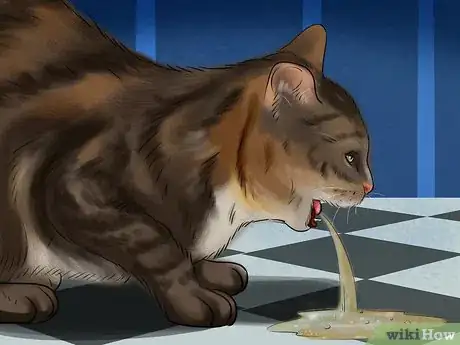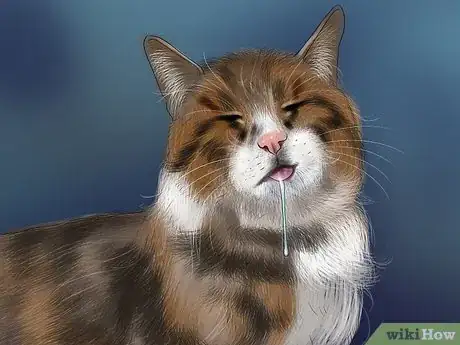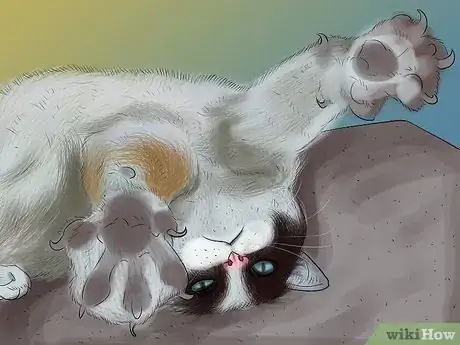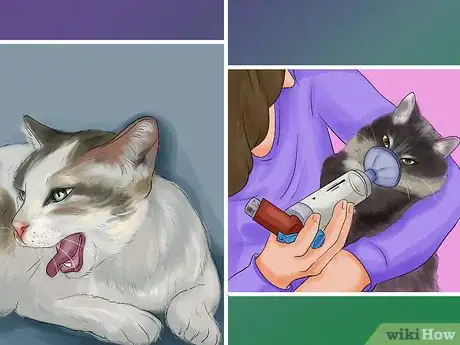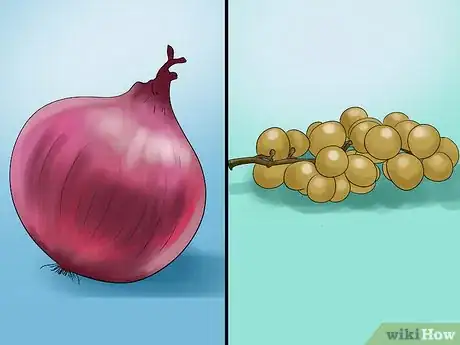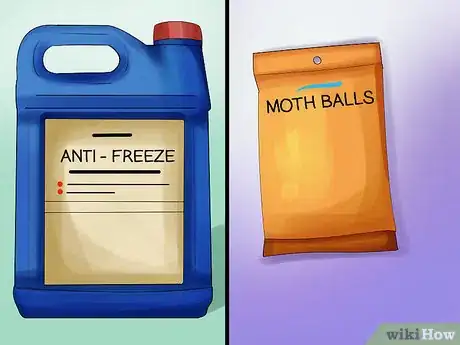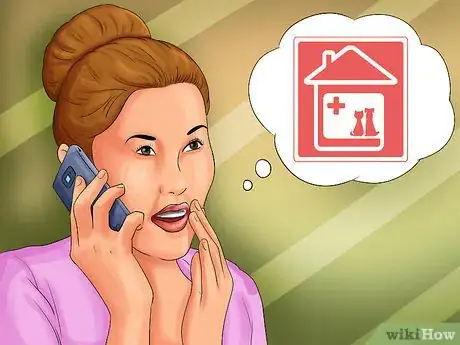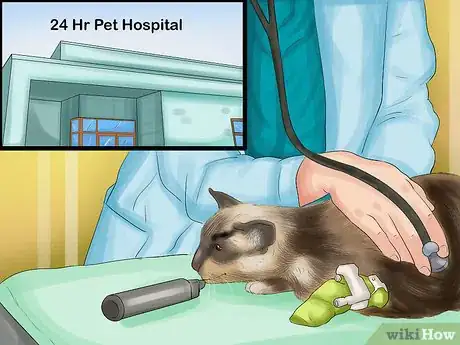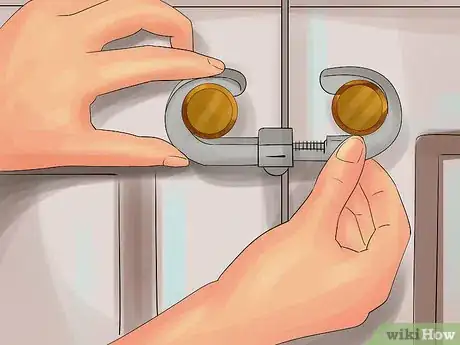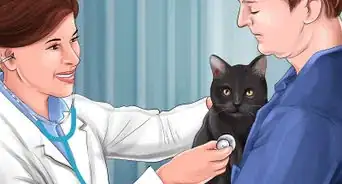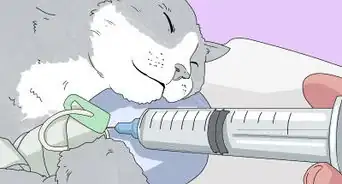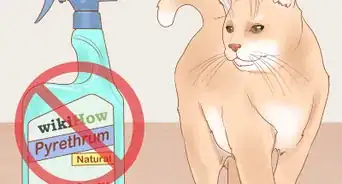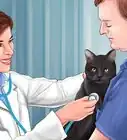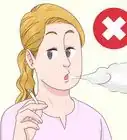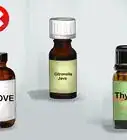This article was co-authored by Lauren Baker, DVM, PhD. Dr. Lauren Baker is a Veterinarian and Assistant Scientist at the University of Wisconsin-Madison. With over 10 years in veterinary medicine, she specializes in the concept of “one health,” which uses insights from veterinary medicine to help human medical research. She holds a Ph.D. in Comparative Biomedical Sciences, a Doctor of Veterinary Medicine, an MS in Comparative Biomedical Sciences, and a Bachelor’s degree in Psychology from the University of Wisconsin-Madison.
There are 11 references cited in this article, which can be found at the bottom of the page.
This article has been viewed 56,877 times.
Despite an owner’s best efforts, sometimes cats manage to consume something toxic. Poisoning from a toxic substance is typically easy to discern, as it causes extreme symptoms including gastrointestinal distress, neurological troubles, respiratory problems, and other visible issues such as vomiting or jaundice. If you think your cat has consumed something toxic, take note of any symptoms they are experiencing, identify the toxic substance if possible, and contact your vet immediately.
Steps
Checking for Symptoms
-
1Watch for gastrointestinal distress. Excessive vomiting, diarrhea, and frequent urination may all be symptoms of poisoning in cats. Watch closely when your cat goes to the bathroom and listen for sounds of heaving.[1]
- A cat may not experience all of these symptoms, depending upon what sort of toxic substance your cat ingested.
- Do not wait for multiple symptoms to appear. If you notice any of these symptoms and have reason to believe your cat ate a toxic substance, call your vet immediately.
-
2Look around the mouth. Drooling and discolored gums may indicate that your cat has consumed a toxic substance. Gently check the gums by lifting up the cat’s cheeks with your finger or thumb and examining the top of the teeth for any unusual color.[2]
- Cats’ gums should normally be a light pink. If the gums are pale, yellowed, dark red, or a muddy brown or bluish hue, these can all indicate that your cat has eaten something toxic.
- If your cat drools regularly, this alone may not be a symptom. Look for excessive amounts of drool as an indicator of a problem.
Advertisement -
3Evaluate neurological symptoms. Some toxic substances can impact the functionality of your cat’s brain, and may cause seizures, incoordination, or a coma. If you notice any neurological symptoms, it is imperative to get your cat to an animal hospital as soon as possible to avoid sustained damage.[3]
- Neurological symptoms can also include changes in personality such as sudden bursts of excitement or severe lethargy and depression.
-
4Monitor the cat’s breathing. Heavy breathing, difficulty inhaling, coughing, and sneezing could all be indicators that your cat has ingested something bad for its health. Closely monitor the rise and fall of your cat’s chest, and listen for coughing, hacking, wheezing, and sneezing.[4]
- Respiratory problems can become fatal quickly. If your cat struggles to breathe, get it to an animal hospital immediately.
Identifying the Toxic Substance
-
1Check the pantry. While one person calls for help, have another person check the area for potentially toxic substances, if possible. Many common human foods are toxic to cats. Check areas where you store food for signs that your cat may have eaten something they were not supposed to, including:[5]
- Any alcohols
- Products with caffeine including food and beverages
- Chocolate
- Vegetables from the onion family including common onions, garlic, and chives
- Grapes or raisins
- Xylitol, an artificial sweetener found in candies, diet foods, and toothpaste
- Unbaked bread dough
-
2Go through your garden. Both plants and pest control chemicals found in gardens can be toxic to cats. Check to make sure that no rat, gopher, insect, or other pest control poison has been disturbed, and check for bite or chew marks on plants. Common plants that are toxic include:[6]
- Aloe
- Amaryllis
- Azaleas
- Caladium
- Lilies
- Ivy
- Mistletoe
- Philodendron
- Poinsettia
- If you’re not sure that a plant is toxic, take a picture or grab a sample of it so that someone can identify it for you.
-
3Inspect medications and chemicals. Medications and household chemicals are some of the most common offenders when it comes to accidental poisoning for household pets. Check the areas where you store medications, cleaning supplies, and other chemicals and check for chew or tamper marks on items like:[7]
- Antifreeze and motor oil
- Fertilizers
- Any household cleaning agent
- Insecticides, including flea and tick treatment
- Painkillers such as acetaminophen, ibuprofen, naproxen, and aspirin
- Cold, Flu, or cough medication
- Moth balls
- Batteries
- Zinc
-
4Take a sample. If you know or can reasonably guess what your cat got into, take the container or a sample of the product to provide for your vet. If no container or sample remains, let the vet know in as much detail as possible what you think your cat consumed.[8]
- If they eat a small aloe plant, for example, let your vet know, “My cat ate an aloe plant that was about two inches tall and had just been recently planted in a pot with potting soil.”
Getting Help for Your Cat
-
1Contact your vet. If your cat is experiencing life-threatening symptoms, such as struggling to breathe or losing consciousness, immediately take them to an animal hospital. If symptoms are not imminently life-threatening, call your vet or an animal hospital right away for further advice.[9]
- Let your vet know what you think your cat consumed, as well as what symptoms it is exhibiting. Be exhaustive in your descriptions.
- Follow your vet’s advice carefully. They may recommend taking your cat in for an emergency visit, or they may advise a home treatment such as inducing vomiting.
- Only perform home treatments such as inducing vomiting with your vet’s permission and using their careful instructions.
-
2Go to an animal hospital. If your cat is exhibiting life-threatening symptoms such as difficulty breathing, loss of consciousness, tremors, seizures, or other critical problems, take them to a 24 hour small pet hospital immediately. Check online or call your local Information Services to locate the nearest facility.[10]
- Symptoms of neurological trauma often require hospitalization. Skip the vet and go straight to the emergency and critical care hospital if your cat is exhibiting signs of neurological problems.
-
3Cat-proof your house. Once you and your cat return home, move those things that you don’t want your cat getting into to locked areas or closed-off spaces. Place child safety locks on cabinets where you keep chemicals, and move all food behind a closed door.[11]
- If your cat got into a plant that made it sick, consider moving houseplants outside to a yard or patio. If your cat is allowed outside, you may want to put fencing and a cover over the planted areas.
References
- ↑ http://www.petmd.com/cat/emergency/poisoning-toxicity/e_ct_swallowed_poisons#
- ↑ http://www.petpoisonhelpline.com/pet-owners/basics/signs-of-poisoning-in-dogs-and-cats/
- ↑ https://icatcare.org/advice/cats-and-poisons
- ↑ http://www.cat-world.com.au/Cat-Health-Collection/poisoning-in-cats.html
- ↑ http://www.petpoisonhelpline.com/poisons/
- ↑ http://www.catster.com/cat-health-care/plants-food-poisonous-to-cats
- ↑ http://www.vetstreet.com/our-pet-experts/pet-poisons-from-a-to-z-26-common-items-that-are-dangerous-to-cats-and-dogs
- ↑ http://www.petmd.com/cat/emergency/poisoning-toxicity/e_ct_poisoning_overview
- ↑ https://www.rspca.org.uk/adviceandwelfare/pets/cats/health/poisoning
Warnings
- Do not try to administer treatment at home without veterinary guidance. Unsupervised attempts at practicing medicine on your cat may only exacerbate the situation.⧼thumbs_response⧽
About This Article
To know if your cat ate something toxic, look for signs of gastrointestinal distress, such as vomiting, diarrhea, or frequent urination. You can also check your cat’s gums for discoloration or drooling, which are common reactions to a toxic substance. Additionally, pay attention to your cat’s behavior and make note of neurological symptoms such as seizures, incoordination, or sudden personality changes. If you notice any of these symptoms, contact your vet to see if you should bring your cat in for treatment. For advice from our Veterinary co-author on how to determine which toxic substance your cat may have eaten, read on!
